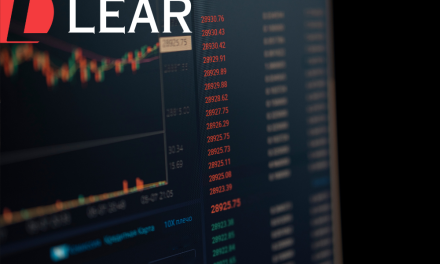Palantir Technologies Inc. (NYSE: PLTR), the data analytics powerhouse famous for its government contracts and advanced AI tools, has been one of the most talked-about stocks of recent years. The company’s dramatic rise from a 2020 IPO under $10 to a peak near $45, followed by volatile swings and a sharp rally in 2025, has left investors asking an important question: Is it time to sell Palantir stock?
Looking at recent market behavior, valuation metrics, and analyst sentiment, the history and data seem to suggest that a cautious approach—or even selling—might be the wisest move.
Palantir’s Recent Performance: A Rollercoaster Ride
Palantir’s stock price has been on a wild ride. After surging 73% in 2025 alone, and approximately 250% since being included in the S&P 500 in September 2024, the company has captured investor imagination.
But in late June 2025, Palantir’s stock dropped sharply, most notably a 9.4% decline on June 27, coinciding with the annual Russell U.S. index rebalancing. This event forced many small-cap-focused funds to divest Palantir shares as the company transitioned into the large-cap category, causing temporary selling pressure.
On the bright side, Palantir rebounded quickly with a 4% jump on July 1 following the announcement of a strategic partnership with Accenture Federal Services to bid on lucrative U.S. government contracts. This collaboration is a testament to Palantir’s ongoing government ties, which remain central to its business.
Why Are Investors Concerned?
Despite the recent rally, several factors have raised red flags:
1. Extremely High Valuation
Palantir’s current market capitalization is roughly $135 billion. However, its annual revenue for 2024 was about $2.6 billion, putting the price-to-sales (P/S) ratio above 50. For comparison, many successful tech giants like Nvidia sport P/E ratios closer to 30 or 40, making Palantir’s valuation appear stretched, especially since it is still unprofitable.
Such lofty valuation assumes rapid revenue growth and sustained profitability, which many analysts question. Historical data shows that stocks with such high multiples often face significant corrections once growth slows or expectations aren’t met.
2. Heavy Reliance on Government Contracts
More than half of Palantir’s revenue comes from government and defense contracts. While these contracts are lucrative and offer stability, they are also subject to political risks and budget fluctuations.
If U.S. or allied government spending priorities shift, Palantir’s revenue streams could be affected. This reliance also limits the company’s ability to diversify quickly into commercial sectors, a risk that could weigh on future growth.
3. Mixed Analyst Opinions
Most Wall Street analysts have a “hold” or “sell” rating on Palantir. The median target price hovers around $20 to $25, far below the current trading price. Even optimistic discounted cash flow models point to a fair value significantly under today’s levels.
Adding to the concern is the fact that Palantir CEO Alex Karp has recently signaled intentions to sell up to 10 million shares over the next year, a move some interpret as a lack of confidence in near-term upside.
Palantir and Canadian Investors: Why It Matters
Though Palantir is a U.S.-based company, Canadian investors have shown strong interest in its potential, especially due to Canada’s growing AI and tech sectors. The company’s recent movements coincide with Canada’s broader economic shifts.
For example, Canada is actively protecting its industries with measures like the recent 30-day tariff deadline, aimed at shielding Canadian businesses from external shocks. Meanwhile, efforts to stabilize domestic institutions, like the Canada Post union agreement, show that the nation is bracing for economic shifts that could also impact investment strategies.
In this context, Canadian investors holding Palantir stock must weigh the risks carefully, considering both the volatile tech sector and the broader economic environment.
What Can History Teach Us?
History offers several cautionary tales of tech stocks with soaring valuations that eventually faced sharp corrections:
- Dot-com bubble (early 2000s): Companies with sky-high valuations but limited profits saw their share prices collapse, wiping out investors.
- 2018 AI hype cycle: Several AI-related stocks surged without solid fundamentals and later plummeted when reality set in.
Palantir’s current high valuation echoes those scenarios, suggesting that investors should be wary. Market exuberance can push prices up, but eventually, fundamentals reassert control.
Should You Sell Palantir Stock Now?
There’s no one-size-fits-all answer, but here are some points to consider:
- If you’re a long-term believer, Palantir is investing heavily in AI and commercial expansion, with potential growth opportunities. Holding might pay off if these strategies succeed.
- If you’re risk-averse or seeking profits: Given the high valuation and risks, locking in gains by selling or reducing exposure might be prudent.
- If you’re a value-focused investor, Current prices likely overstate the company’s intrinsic value, so selling or avoiding new purchases may make sense.
Always consult with a financial advisor familiar with your personal goals before making decisions.
Conclusion
Palantir’s stock has been a headline-maker, and its future remains promising yet uncertain. History and valuation trends suggest that caution, if not a full exit, may be wise, especially for those exposed to the current high multiples and government contract risks.
As the tech market continues to evolve rapidly—both in the U.S. and Canada—investors must balance optimism for AI-driven growth with sober financial analysis.






